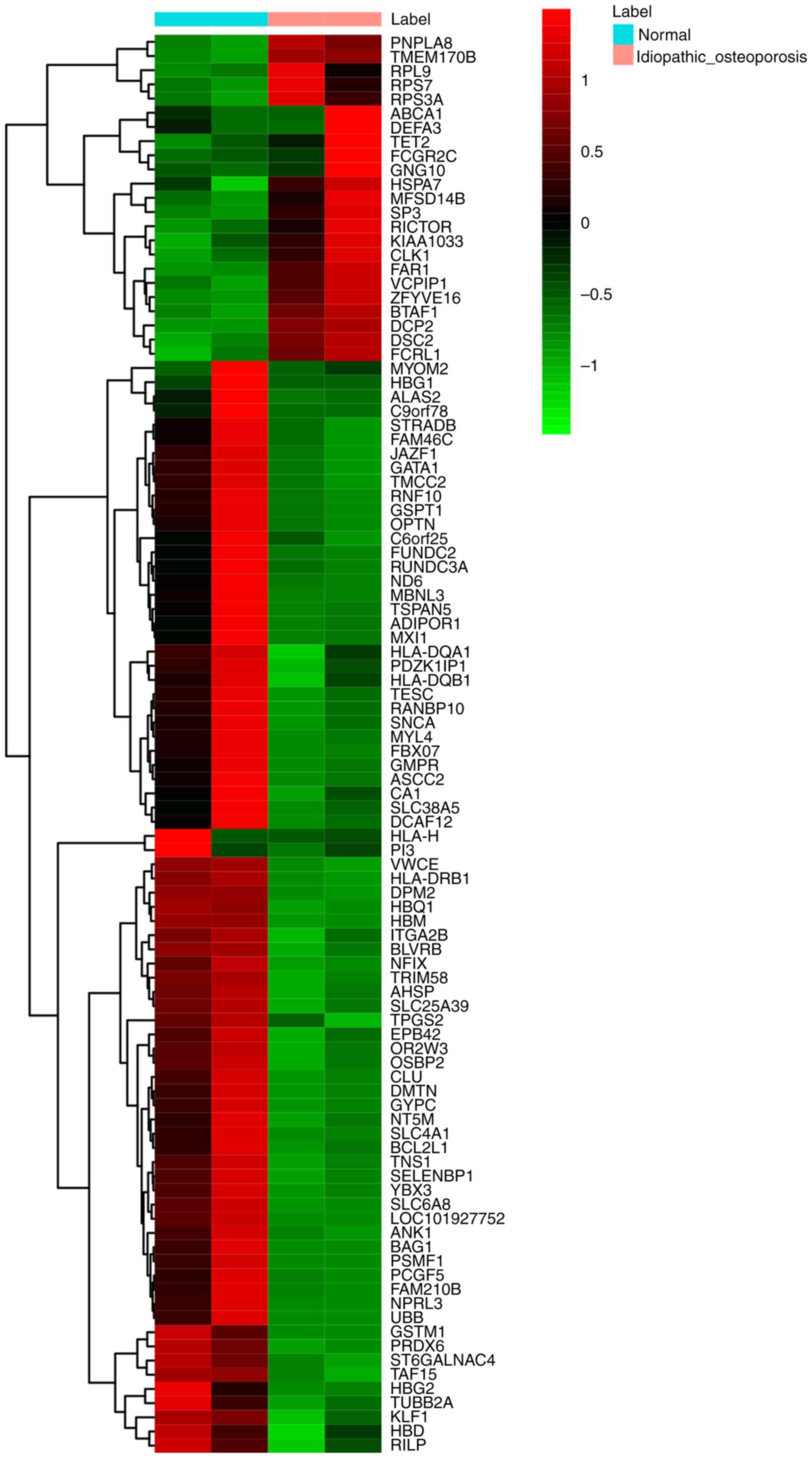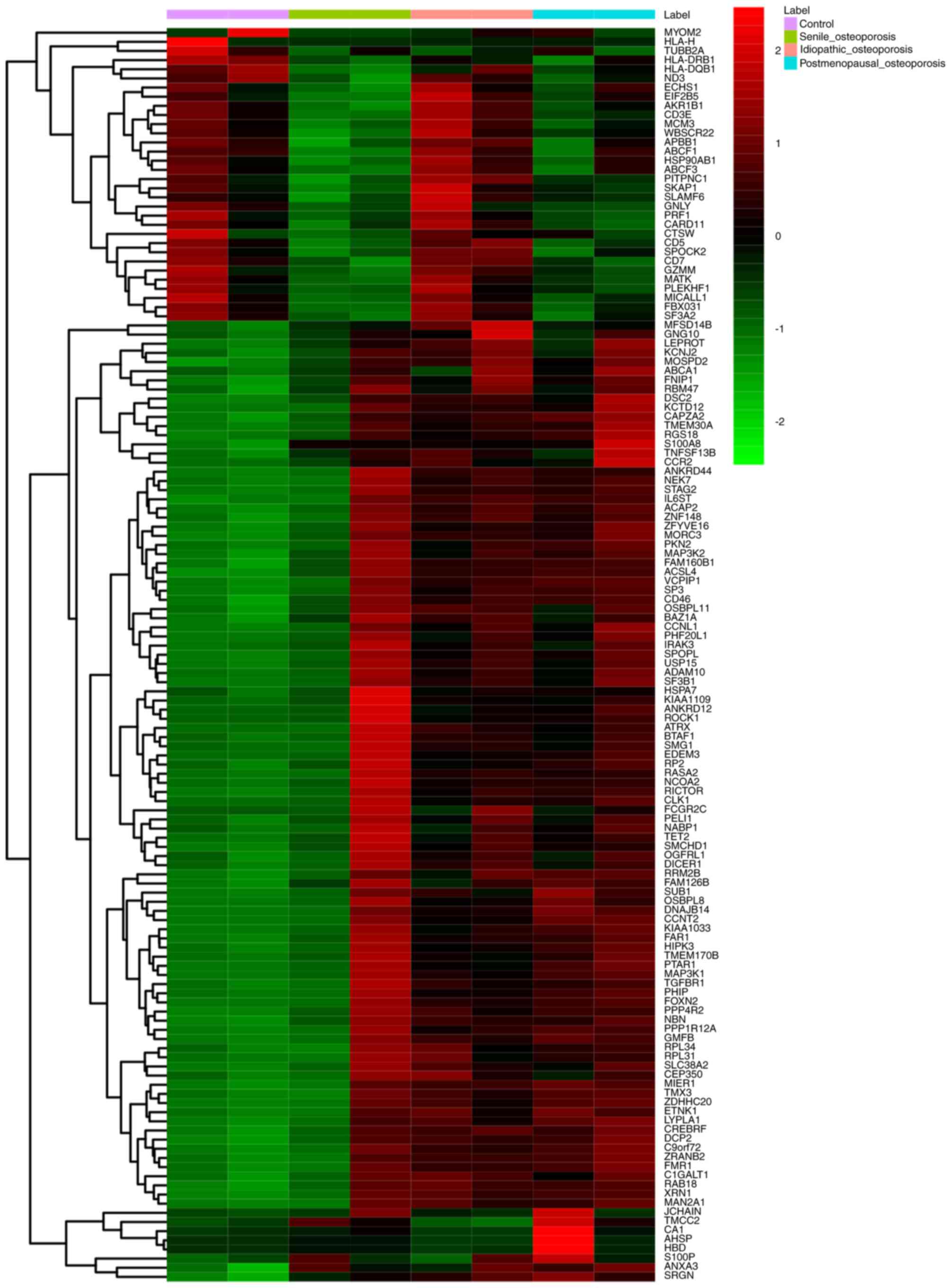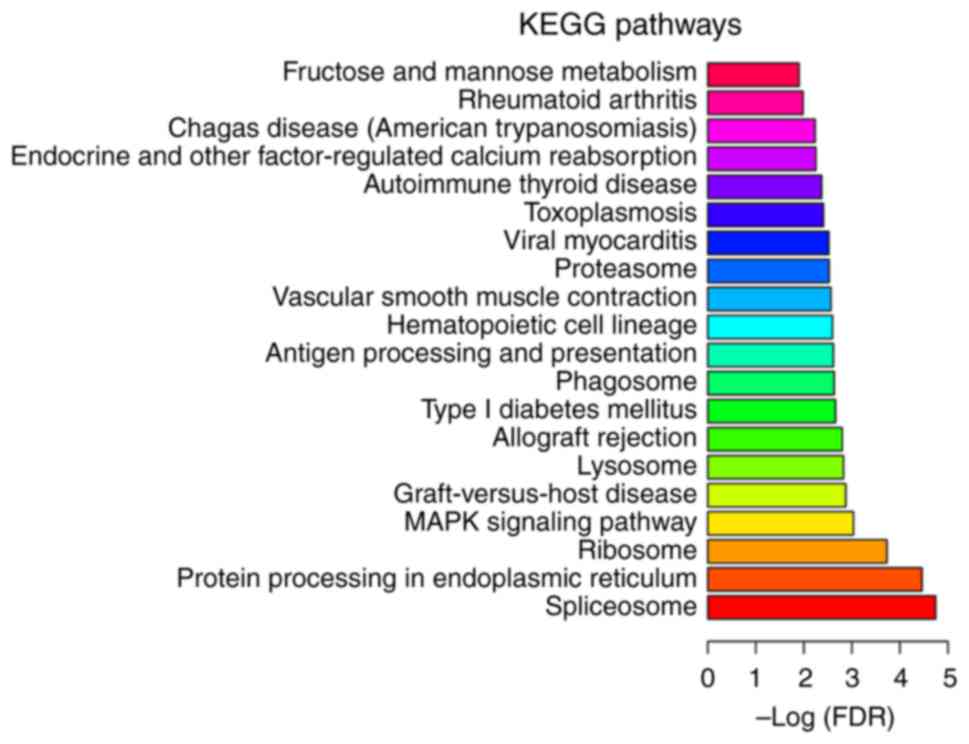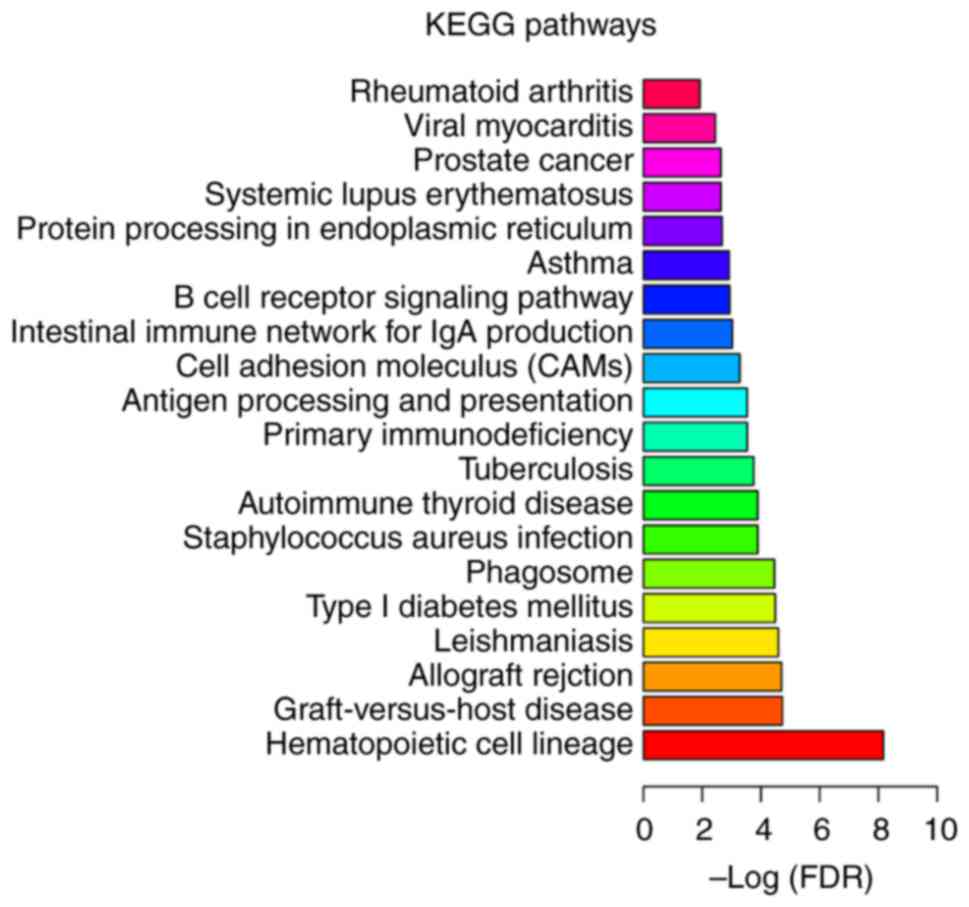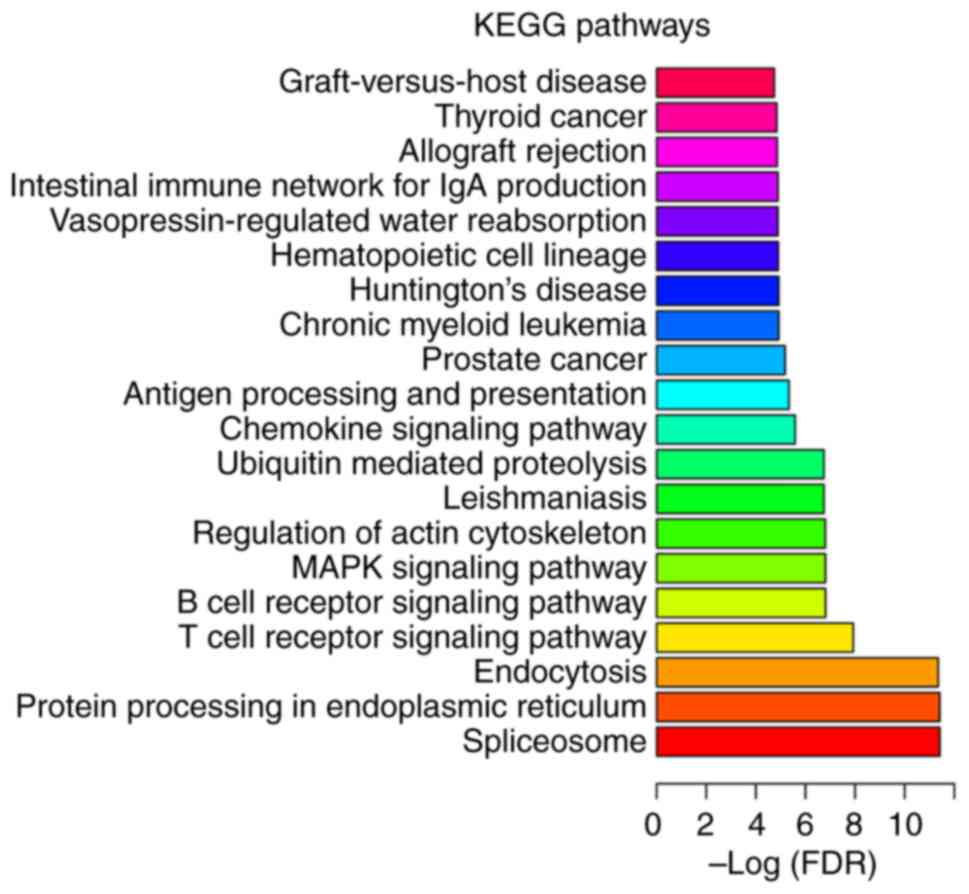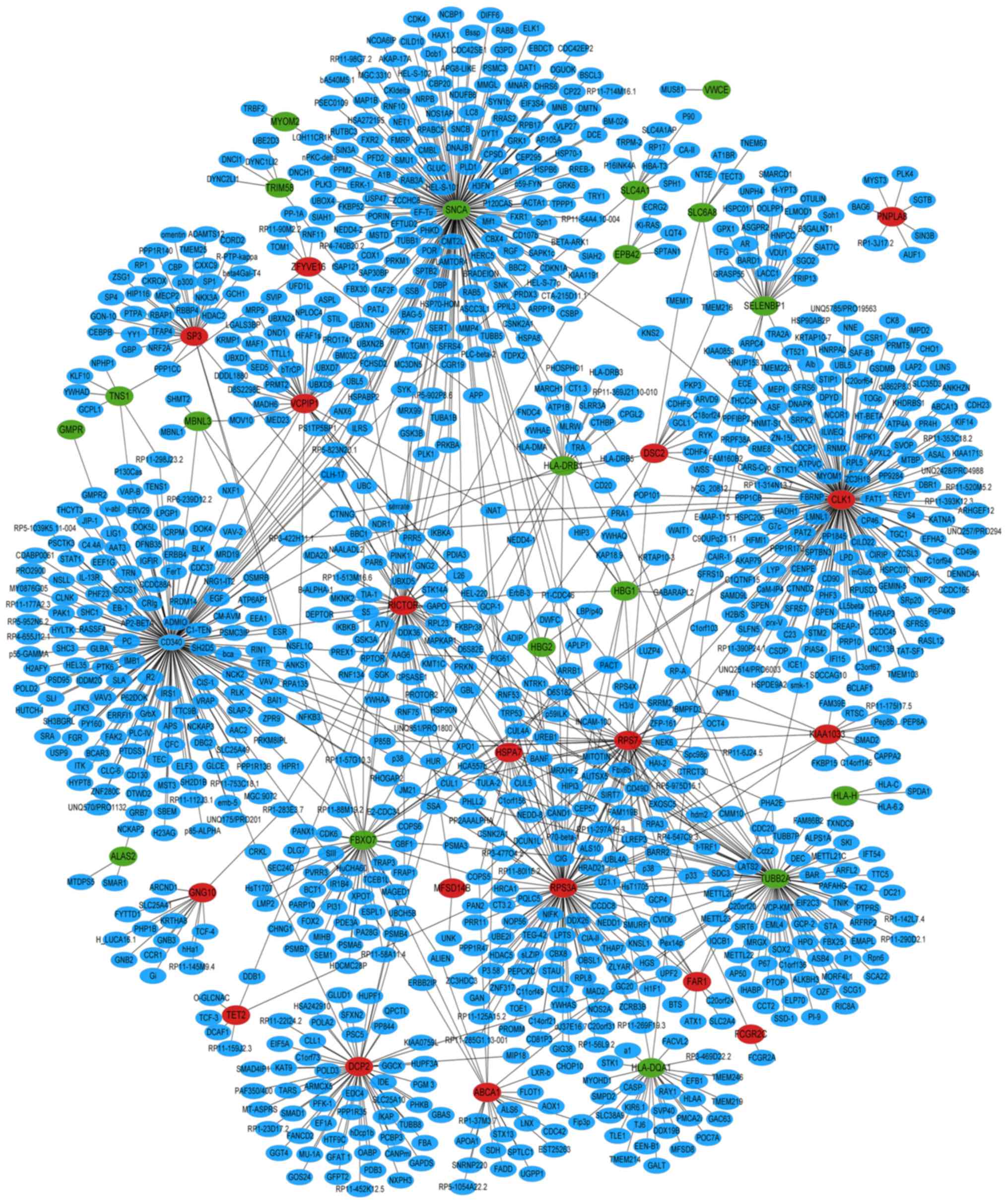|
1
|
Karasik D, Rivadeneira F and Johnson ML:
The genetics of bone mass and susceptibility to bone diseases. Nat
Rev Rheumatol. 12:4962016. View Article : Google Scholar : PubMed/NCBI
|
|
2
|
Arjmandi BH, Johnson SA, Pourafshar S,
Navaei N, George KS, Hooshmand S, Chai SC and Akhavan NS:
Bone-protective effects of dried plum in postmenopausal women:
Efficacy and possible mechanisms. Nutrients. 9:pii: E496. 2017.
View Article : Google Scholar : PubMed/NCBI
|
|
3
|
Usman J and Siddiqui H: Osteoporosis in
family practice. J Pak Med Assoc. 53:433–436. 2003.PubMed/NCBI
|
|
4
|
Brumsen C, Papapoulos SE, Lentjes EG,
Kluin PM and Hamdy NA: A potential role for the mast cell in the
pathogenesis of idiopathic osteoporosis in men. Bone. 31:556–561.
2002. View Article : Google Scholar : PubMed/NCBI
|
|
5
|
Dudakovic A, Camilleri ET, Riester SM,
Paradise CR, Gluscevic M, O'Toole TM, Thaler R, Evans JM, Yan H,
Subramaniam M, et al: Enhancer of Zeste homolog 2 inhibition
stimulates bone formation and mitigates bone loss caused by
ovariectomy in skeletally mature mice. J Biol Chem.
291:24594–24606. 2016. View Article : Google Scholar : PubMed/NCBI
|
|
6
|
Lee YH, Kim JE, Roh YH, Choi HR, Rhee Y,
Kang DR and Lim SK: The combination of vitamin D deficiency and
mild to moderate chronic kidney disease is associated with low bone
mineral density and deteriorated femoral microarchitecture: Results
from the KNHANES 2008–2011. J Clin Endocrinol Metab. 99:3879–3888.
2014. View Article : Google Scholar : PubMed/NCBI
|
|
7
|
Klein-Nulend J, van Oers RF, Bakker AD and
Bacabac RG: Bone cell mechanosensitivity, estrogen deficiency, and
osteoporosis. J Biomech. 48:855–865. 2015. View Article : Google Scholar : PubMed/NCBI
|
|
8
|
Gielen E, Vanderschueren D, Callewaert F
and Boonen S: Osteoporosis in men. Best Pract Res Clin Endocrinol
Metab. 25:321–335. 2011. View Article : Google Scholar : PubMed/NCBI
|
|
9
|
Patsch JM, Kohler T, Berzlanovich A,
Muschitz C, Bieglmayr C, Roschger P, Resch H and Pietschmann P:
Trabecular bone microstructure and local gene expression in iliac
crest biopsies of men with idiopathic osteoporosis. J Bone Miner
Res. 26:1584–1592. 2011. View
Article : Google Scholar : PubMed/NCBI
|
|
10
|
Paccou J, Dewailly J and Cortet B: Reduced
levels of serum IGF-1 is related to the presence of osteoporotic
fractures in male idiopathic osteoporosis. Joint Bone Spine.
79:78–82. 2012. View Article : Google Scholar : PubMed/NCBI
|
|
11
|
Muschitz C, Kocijan R, Pahr D, Patsch JM,
Amrein K, Misof BM, Kaider A, Resch H and Pietschmann P:
Ibandronate increases sclerostin levels and bone strength in male
patients with idiopathic osteoporosis. Calcif Tissue Int.
96:477–489. 2015. View Article : Google Scholar : PubMed/NCBI
|
|
12
|
Mohammadi Z, Keshtkar A, Fayyazbakhsh F,
Ebrahimi M, Amoli MM, Ghorbani M, Khashayar P, Dini M, Ebrahimi-Rad
M and Larijani B: Prevalence of osteoporosis and vitamin D receptor
gene polymorphisms (FokI) in an Iranian general population based
study (Kurdistan) (IMOS). Med J Islam Repub Iran. 29:2382016.
|
|
13
|
Andrews S: FastQC A Quality Control tool
for High Throughput Sequence Data. 2014.
|
|
14
|
Martin M: Cutadapt removes adapter
sequences from high-throughput sequencing reads. EMBnet J. 17:2011.
View Article : Google Scholar
|
|
15
|
Trapnell C, Roberts A, Goff L, Pertea G,
Kim D, Kelley DR, Pimentel H, Salzberg SL, Rinn JL and Pachter L:
Differential gene and transcript expression analysis of RNA-seq
experiments with TopHat and Cufflinks. Nat Protoc. 7:562–578. 2012.
View Article : Google Scholar : PubMed/NCBI
|
|
16
|
Ai H, Ai Y and Meng F: GenomeLandscaper:
Landscape analysis of genome-fingerprints maps assessing chromosome
architecture. Sci Rep. 8:10262018. View Article : Google Scholar : PubMed/NCBI
|
|
17
|
Gheinani Hashemi A, Burkhard FC, Rehrauer
H, Fournier Aquino C and Monastyrskaya K: MicroRNA MiR-199a-5p
regulates smooth muscle cell proliferation and morphology by
targeting WNT2 signaling pathway. J Biol Chem. 290:7067–7086. 2015.
View Article : Google Scholar : PubMed/NCBI
|
|
18
|
Tabas-Madrid D, Nogales-Cadenas R and
Pascual-Montano A: GeneCodis3: A non-redundant and modular
enrichment analysis tool for functional genomics. Nucleic Acids
Res. 40:(Web Server Issue). W478–W483. 2012. View Article : Google Scholar : PubMed/NCBI
|
|
19
|
Demchak B, Hull T, Reich M, Liefeld T,
Smoot M, Ideker T and Mesirov JP: Cytoscape: The network
visualization tool for GenomeSpace workflows. F1000Res.
3:1512014.PubMed/NCBI
|
|
20
|
Kim EK and Choi EJ: Pathological roles of
MAPK signaling pathways in human diseases. Biochim Biophys Acta.
1802:396–405. 2010. View Article : Google Scholar : PubMed/NCBI
|
|
21
|
Che J P, Li W, Yan Y, Liu M, Wang GC, Li
QY, Yang B, Yao XD and Zheng JH: Expression and clinical
significance of the nin one binding protein and p38 MAPK in
prostate carcinoma. Int J Clin Exp Pathol. 6:2300–2311.
2013.PubMed/NCBI
|
|
22
|
Kim HK, Kim MG and Leem KH: Osteogenic
activity of collagen peptide via ERK/MAPK pathway mediated boosting
of collagen synthesis and its therapeutic efficacy in osteoporotic
bone by back-scattered electron imaging and microarchitecture
analysis. Molecules. 18:15474–15489. 2013. View Article : Google Scholar : PubMed/NCBI
|
|
23
|
Hah YS, Kang HG, Cho HY, Shin SH, Kim UK,
Park BW, Lee SI, Rho GJ, Kim JR and Byun JH: JNK signaling plays an
important role in the effects of TNF-α and IL-1β on in vitro
osteoblastic differentiation of cultured human periosteal-derived
cells. Mol Biol Rep. 40:4869–4881. 2013. View Article : Google Scholar : PubMed/NCBI
|
|
24
|
Zhou J, Fujiwara T, Ye S, Li X and Zhao H:
Downregulation of Notch modulators, tetraspanin 5 and 10, inhibits
osteoclastogenesis in vitro. Calcif Tissue Int. 95:209–217. 2014.
View Article : Google Scholar : PubMed/NCBI
|
|
25
|
Kim DY, Kim GW and Chung SH: Nectandrin a
enhances the BMP-induced osteoblastic differentiation and
mineralization by activation of p38 MAPK-Smad signaling pathway.
Korean J Physiol Pharmacol. 17:447–453. 2013. View Article : Google Scholar : PubMed/NCBI
|
|
26
|
Li J, Zhang L, Zhou L, Yu ZP, Qi F, Liu B,
Zi SX, Li L, Li Y, Wang SB, et al: Beneficial effects of
non-matched allogeneic cord blood mononuclear cells upon patients
with idiopathic osteoporosis. J Transl Med. 10:1022012. View Article : Google Scholar : PubMed/NCBI
|
|
27
|
Yong L, Chengjun H, Jinhua SH and Paul J:
possible linkage between osteoporosis and genes associated with
type 1 diabetes mellitus. Med One. 1:e1700012017.
|
|
28
|
Calabrese G, Mesner LD, Foley PL, Rosen CJ
and Farber CR: Network analysis implicates alpha-synuclein (Snca)
in the regulation of ovariectomy-induced bone loss. Sci Rep.
6:294752016. View Article : Google Scholar : PubMed/NCBI
|
|
29
|
Bohaty I, Jurásné-Lukovics M,
Somogyiné-Vári É, Kozma L, Dankó K and Molnár I: HLA class I, Cw*01
and Cw*15 alleles can play a preventing role in serum IL17
elevation associated with postmenopausal osteoporosis in Hungary.
Endocrine. Apr 27–2013.DOI: 10.1530/endoabs.32.P85.
|
|
30
|
Alam I, Carr LG, Liang T, Liu Y, Edenberg
HJ, Econs MJ and Turner CH: Identification of genes influencing
skeletal phenotypes in congenic P/NP rats. J Bone Mineral Res.
25:1314–1325. 2010. View
Article : Google Scholar
|
|
31
|
Jain P, Karthikeyan C, Moorthy NS, Waiker
DK, Jain AK and Trivedi P: Human CDC2-like kinase 1 (CLK1): a novel
target for Alzheimer's disease. Curr Drug Targets. 15:539–550.
2014. View Article : Google Scholar : PubMed/NCBI
|
|
32
|
Chang X, Zheng Y, Yang Q, Wang L, Pan J,
Xia Y, Yan X and Han J: Carbonic anhydrase I (CA1) is involved in
the process of bone formation and is susceptible to ankylosing
spondylitis. Arthrit Res Ther. 14:R1762012. View Article : Google Scholar
|
|
33
|
Li W, Chen WS, Zhou PP, Cao L and Yu LJ:
Influence of initial pH on the precipitation and crystal morphology
of calcium carbonate induced by microbial carbonic anhydrase.
Colloids Surf B Biointerfaces. 102:281–287. 2013. View Article : Google Scholar : PubMed/NCBI
|
|
34
|
Chang X, Han J, Zhao Y, Yan X, Sun S and
Cui Y: Increased expression of carbonic anhydrase I in the synovium
of patients with ankylosing spondylitis. BMC Musculoskelet Disord.
11:2792010. View Article : Google Scholar : PubMed/NCBI
|
|
35
|
Tóthová V and Gibadulinová A: S100P, a
peculiar member of S100 family of calcium-binding proteins
implicated in cancer. Acta Virol. 57:238–246. 2013. View Article : Google Scholar : PubMed/NCBI
|
|
36
|
Li XL, Wu MS, Zhu XW, Deng YC, Ye YY, Zhao
SZ, Ren LZ and Li B: Effects of flavonoids from Cuscuta chinensis
on intestinal calcium-binding protein mRNA expression in
ovariectomized osteoporosis model rats. Chin J Tissue Eng Res.
4271–4276. 2014.
|



